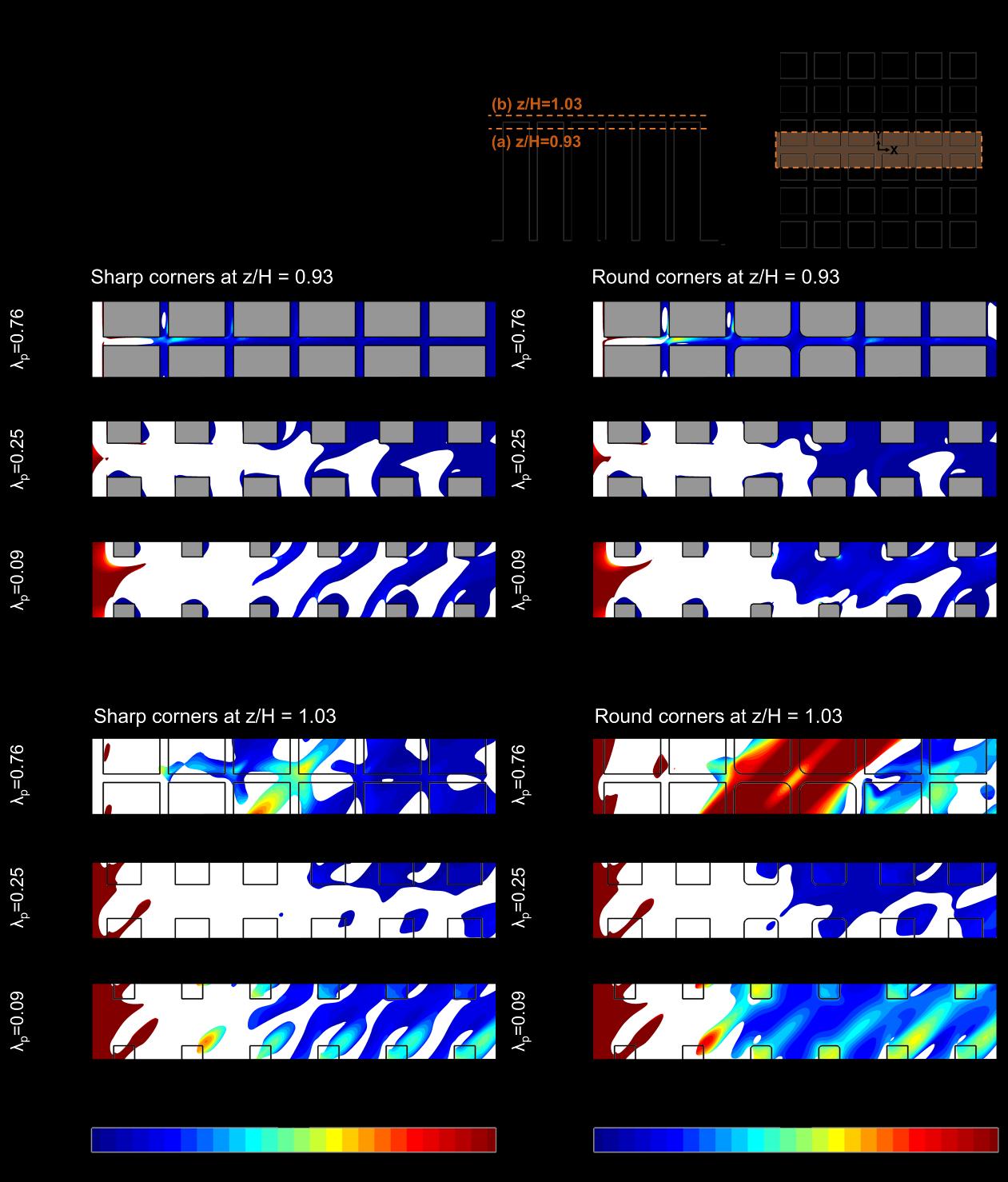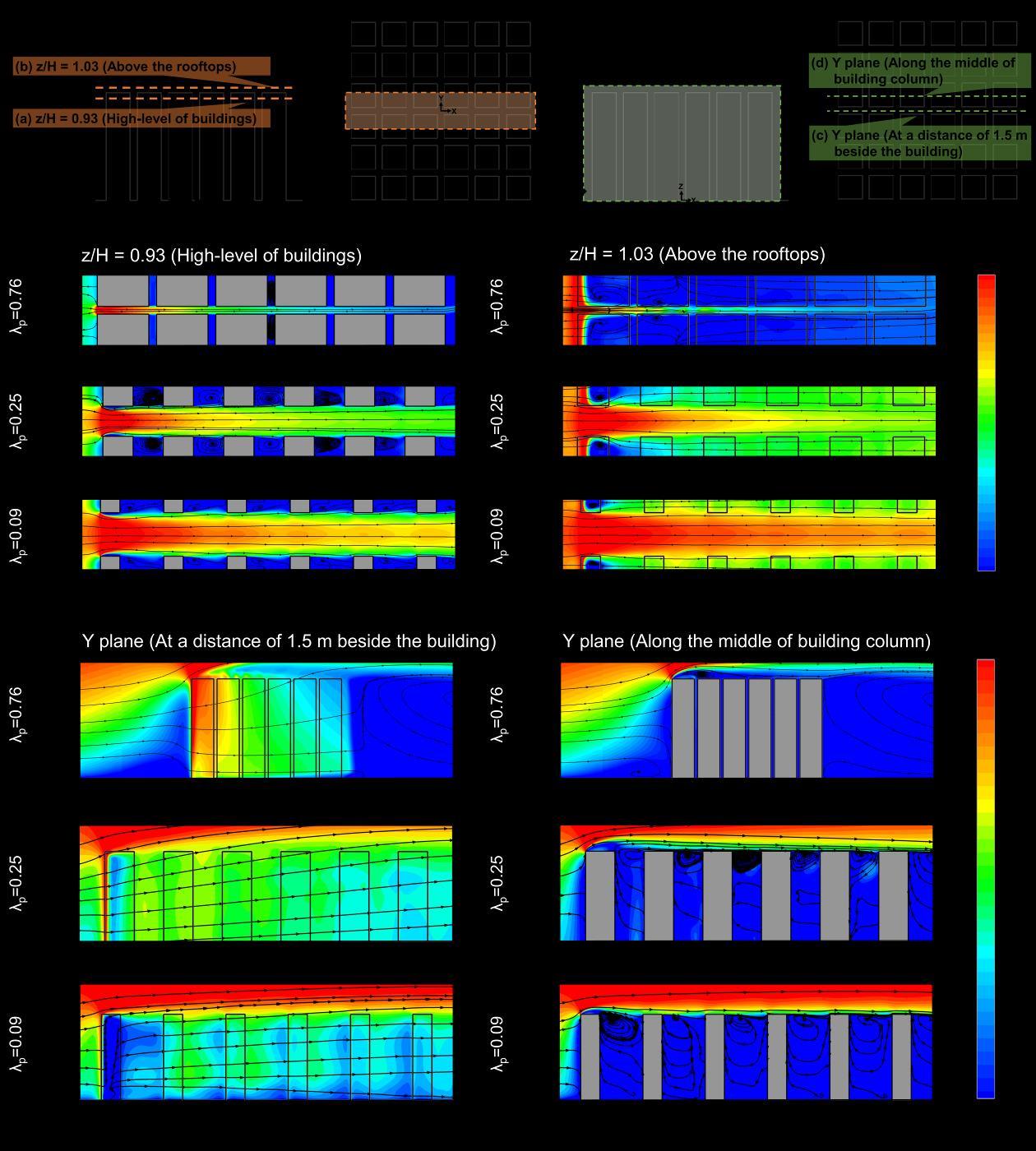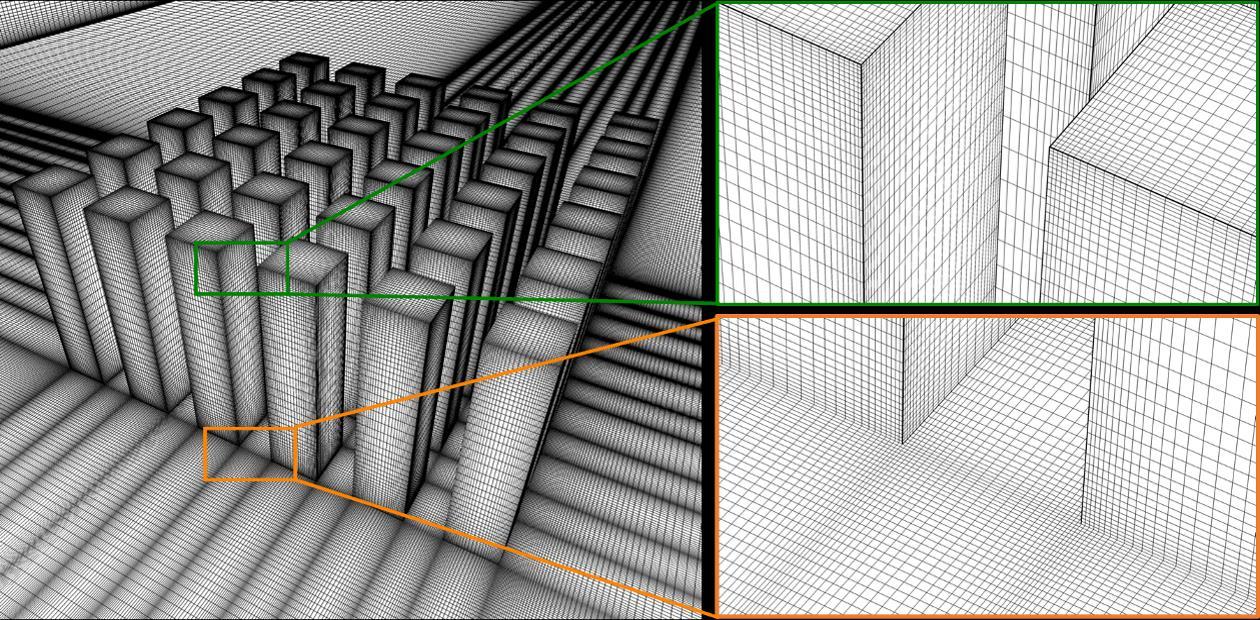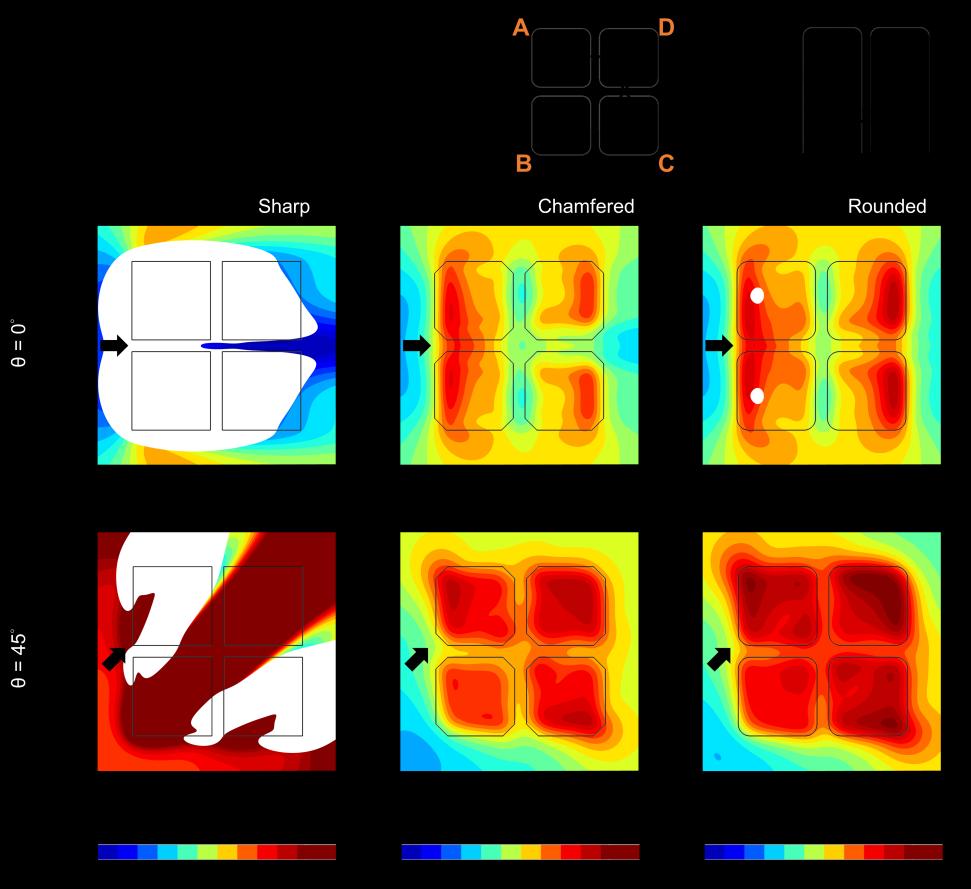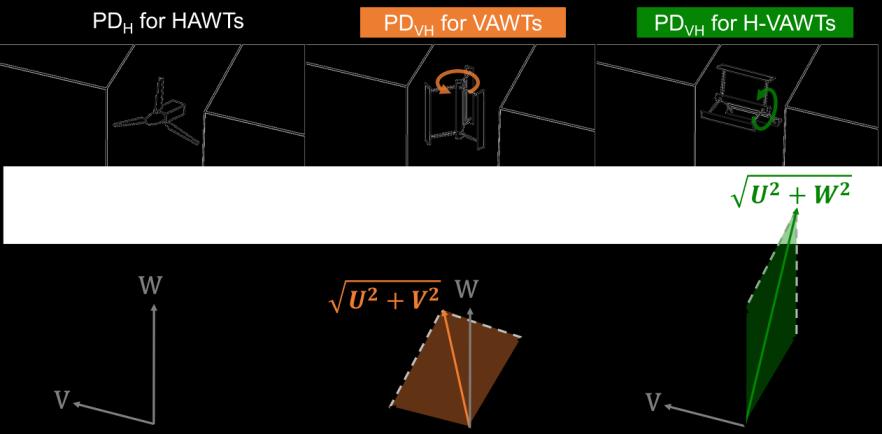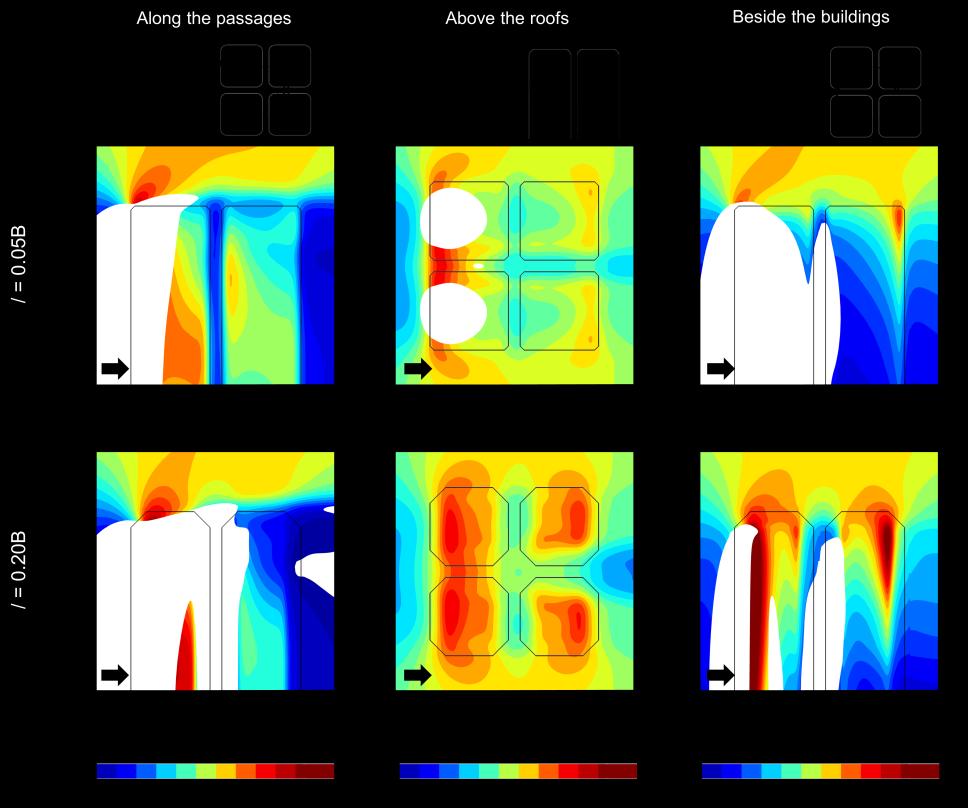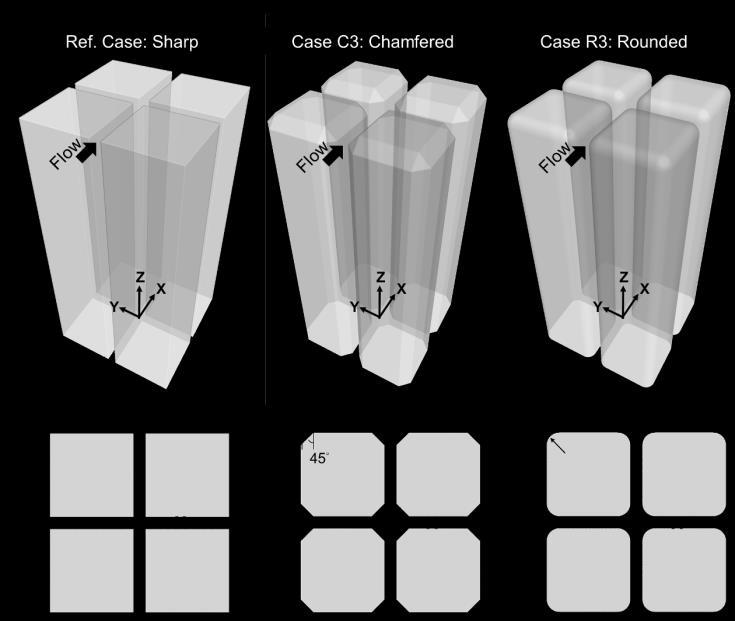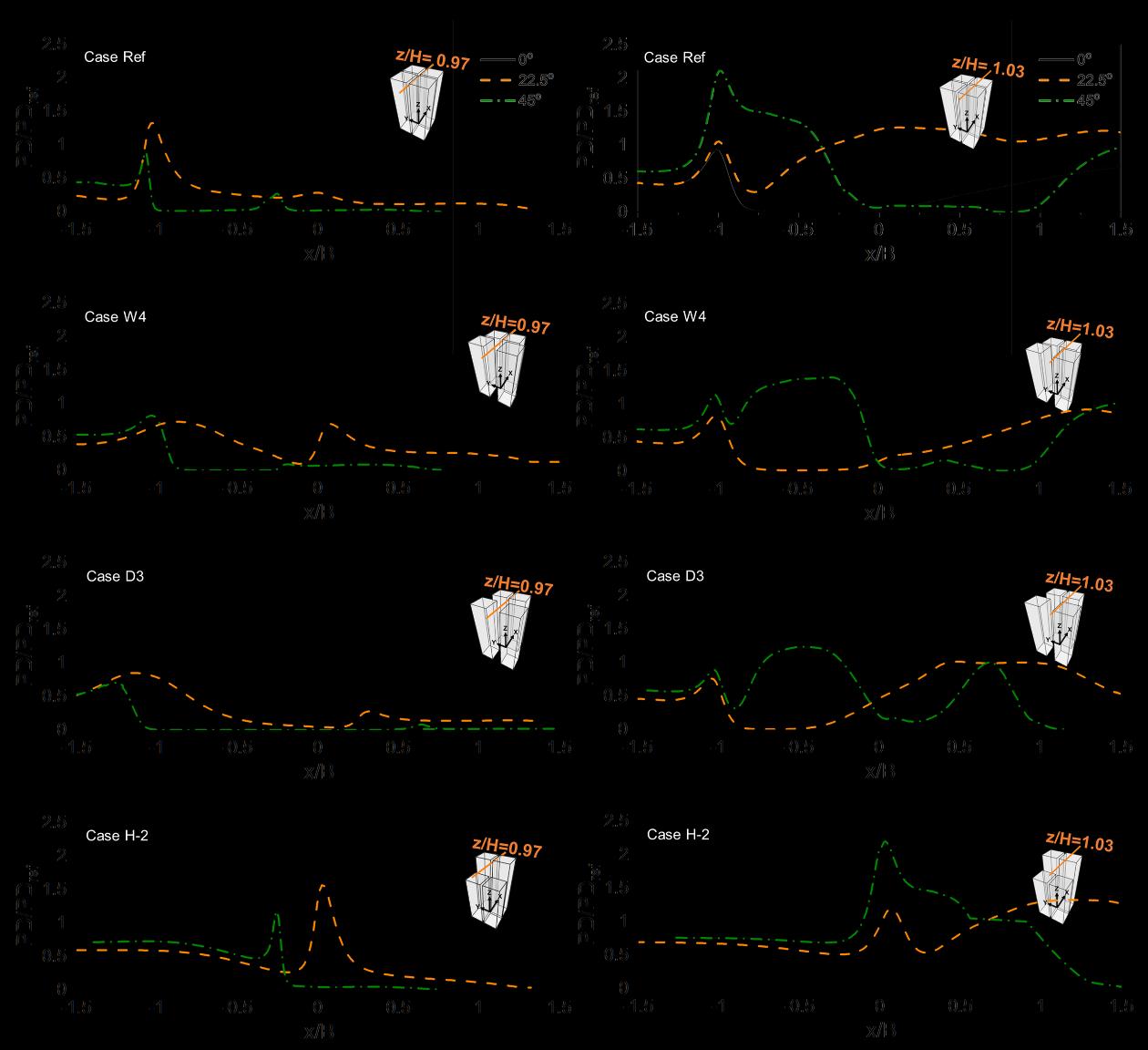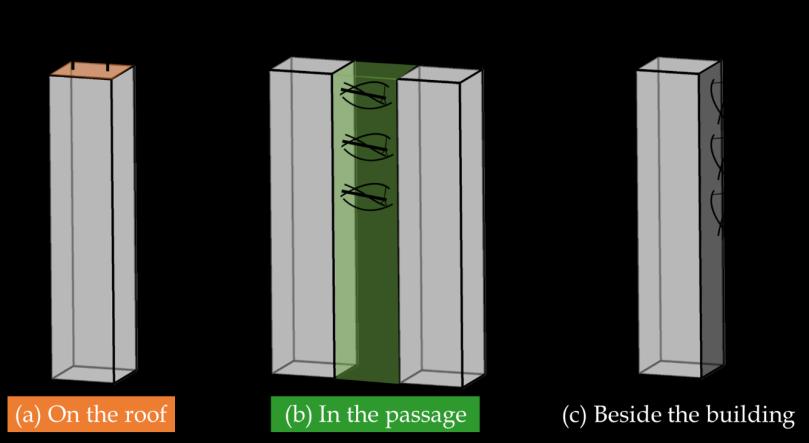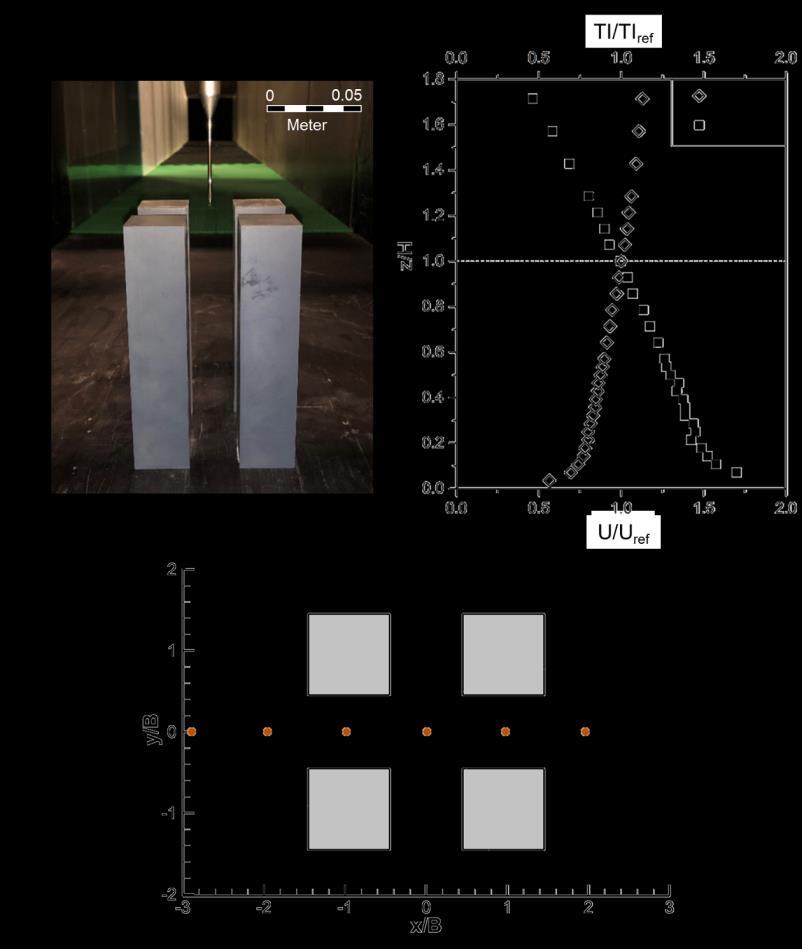Chapter 4
66 Cs ɛ H H/W Iref k ks PD PDref RANS RSM TI TI TIref u u U(z)ABL u*ABL Uref uref v V Vref w W x, y, z y* z0
4.1
Roughness constant Turbulent dissipation rate Building height Building-height-to-street-width ratio Reference turbulence intensity Turbulent kinetic energy Sand-grain roughness height Power density Reference power density Reynolds-averaged Naiver-Stokes Reynolds stress model Turbulence intensity Incident vertical profiles of turbulence intensity Reference turbulence intensity at reference height H Streamwise mean velocity component Incident vertical profiles of streamwise mean velocity component Mean inlet velocity of atmospheric boundary layer ABL friction velocity Reference wind speed Reference streamwise mean velocity component Cross-stream velocity Velocity magnitude Reference velocity magnitude Spanwise velocity Gap width between buildings Coordinates y plus Aerodynamic roughness length
Introduction
Urban wind energy presents lots of interest through turbine installation in the urban environment, which can solve the transportation difficulties of electric transmission lines from the wind farms in remote locations to cities [4, 130]. However, the challenges are also caused by complicated interactions of turbulent wind flows and eddies with urban forms and structures [47, 131]. The urban morphology is usually directly related to the characteristics of urban environments, including the urban density and urban arrangement, and the geometry of buildings. Consequently, to maximize the urban wind energy potential for facilitating sustainable urban areas at the neighborhood and city scales, it is crucial to comprehend the detailed airflow patterns and turbulence characteristics around buildings in the urban configuration. Different flow regimes over street canyons determine the amounts of power density and turbulence intensity around high-rise buildings in urban areas, which are the essential parameters in estimating wind energy potential. Much attention has been devoted to investigating the relationship between the urban form and sustainability, pinpointing the implications of the shape and density of cities for future progression. Strong arguments from many studies suggest the compact city as the most sustainable urban form [132]. Urban density determines the compactness among buildings. It can be correlated with two indexes as (1) the urban plan area density (λp) (i.e., the ratio between the plan area of buildings viewed from above and the total floor area) and (2) frontal area density (λf) (i.e., the ratio of the frontal area of buildings to the total floor area). The building area and frontal


